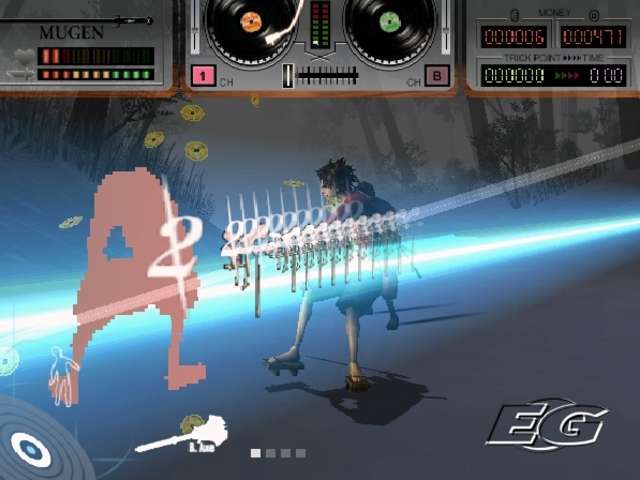Suda 51
"One day, I want to be able to throw pants."
"We won't be able to make the same game for all territories. For Europe, we're going to release two versions. One extreme version, and one with less violence," Suda says. "The last time I did a European press tour, everyone asked me this. With No More Heroes 2 we want to please the fans too. I want the European users to be able to experience the extreme version."
It's not, he says, that either version is necessarily the "true" one: they both developed simultaneously in his head. "When I first had the concept, I had both the bloody version and the milder version in mind," he says. "So when I worked on the US version, image-wise, it wasn't a problem for me to make, but when I made the Japanese version, I needed to rethink it a little bit. But I did both at the same time."
It wasn't just the level of violence that differed between home and overseas versions of No More Heroes. It was the reception the game met, making a considerably bigger splash in the US and Europe. How did Grasshopper reverse the trend at a time most Japanese game studios are facing declining popularity with the gaijin?
"Well, one reason is because I'm not 'Japanese'," he says jokingly. "For the staff at Grasshopper, I'm there as a kind of conductor, but we also have a lot of Japanese staff who have this kind of foreigner's mindset. I think maybe that's one of the reasons we managed to grasp what the foreign users were looking for."
He pauses and his eyes twinkle for a second, and he allows himself one moment, just one, of hubris. "Well, maybe it's just because I know what I'm doing," he says and roars with laughter. "But I don't want to say that, it looks bad."

Suda 51 is one of a breed of Japanese developers we have scant examples of in the West; guys who walk like rock stars, talk like rock stars, dress like rock stars, and enjoy global stardom. Guys like former Tecmo firebrand Tomonobu Itagaki, or SEGA's whisky-swilling Toshihiro Nagoshi, of Super Monkey Ball and Yakuza fame. "Yeah, Nagoshi-san and Itagaki-san are really cool," he says. "They're both really tall, too," he adds, as if that explained the phenomenon entirely.
It's partly down to Tokyo's openness to international culture, he reckons, that these flamboyant personalities emerge. But he turns the premise on its head; it's not Japan that makes Japanese game creators megastars. Not in his case, anyway. It's the rest of the world.
"I realised that the first time I went to E3, it was seven years ago," Suda 51 says. "Once I went to E3 and saw what the US was making, I really got a shock. Since I went to E3, I realised how exciting the videogames business is."
"For example, you had those booth babes that were just distributing some stuff - and I saw they were distributing condoms too. And then they were throwing pants! When I saw that I was like, wow! That's great. One day, I want to be able to throw pants to the public. That's one of my main goals." Not for the first time in the interview, Suda 51 cracks himself up.
Our American colleagues will be there ready to catch them, Suda. We'll make do with a handshake and a cheeky smile. And a dozen more games as gloriously silly as No More Heroes, thank you very much.
